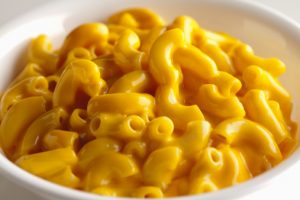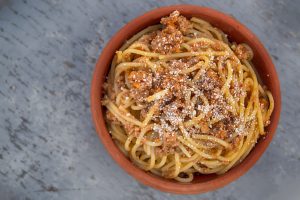- Did you know there are a million boxes of Kraft mac and cheese sold everyday?
The history of noodles and dinner kits all started with noodles, sauce and cheese. Now, it’s an industry worth $79 billion dollars.
The first ever meal kit came from Chef Boyardee himself. And, did you know there are a million boxes of Kraft mac and cheese sold everyday?
Just 100 yeas ago, pasta was not popular in the United States as it is now. But then, an immigrant brought a taste of Italy into American kitchens with flavors and dishes they hadn’t tried yet.
And a cheese company turned an unknown pasta dish into Americas favorite
Here’s the the history of noodles and dinner kits; Kraft and Boyardee!
Some History
The roaring 20s were an age of prosperity, of experimentation and possibility. The rise in leisure spending was up among the wealthy. French food was big at the time and the finest restaurants were French.
1920s processed foods had a strangle hold on American kitchens with an enormous increase of canned goods after WW1 . There was suddenly an increase in shortcuts for Americans and we wanted more. This is where the history of noodles and dinner kits starts to come into view.
After the stock market crash of 1929 and with the start of the Depression, people had little to no money to spend. They were changing the way they ate to make it cheaper so they could afford to live.
After Pearl Harbor, nearly 16 million Americans were called to serve. Within months, manufacturers and consumers across the country were forced to make sacrifices.
Sugar, meat and dairy were considered rationed provisions meaning they were
Tin once used in canneries was rerouted to the war even with lots of products being sold in tin cans.
The US war efforts created 17 million jobs and boosted American productivity by 96%. Innovations in processed and easy make meals boomed.
Boiardi. Wait Who?
In Cleveland Ohio, a chef opens a restaurant. He has classical French cooking but felt that since he wasn’t French, he wanted to do something that was his heritage and his background. He also wanted to do something that other people weren’t. (How about an newcomer being responsible for the history of noodles and dinner kits?)
“Italian food?” The landlord said to him. “You probably won’t be in business in a week.” Hector Boyardee came from a meager beginning to now selling half a billion cans of his products domestically each year. His original landlord couldn’t have been more wrong.
But back in 1924, he was an unknown immigrant facing an intolerant nation and lots of anti-Italian sentiment. Hector’s real name, Ettore, was changed by immigration agents when he entered the country. (The original spelling of his last name, Boiardi, changed as well. Boyardee was and to this day, is spelled as such for Americans, in ease of spelling and pronunciation. It was also part of a deal he made and it was change it or no deal.)
Boyardee opened Garden of Italy in 1924 . Right away, someone complained the sauce was too spicy. Boyardee changed his sauce to match a more Americanized palate and within 6 months, debuted a milder menu.
People loved his food so much wanted his recipe and of course, he wouldn’t give it up. In only a weeks time, 10 customers asked for food to pay for and take home.
Takeout Requests
In the 1920s, there was no takeout. (This all came before the history of noodles and Los Angeles had the closest thing with Chinese food offering meals to go in their iconic white cartons. This request is decades before takeout takes off. Boyardee wanted to capitalize on a more convenient way for people to eat his food at home.
He basically created the first ever meal kit with a bag that contained the makings of spaghetti dinner. The bag had sauce, cheese, pasta and cooking directions on the side to tell you everything you needed to do at home.
He had introduced the idea of Italian food and how to cook it at home. But he was making these at the restaurant. The lines were so big for take home orders, and it left the staff falling behind and exhausted.
Boyardee rode a wave of success during the Great Depression. His products were inexpensive, filling, nutritious and convenient. He was the first to add to the history of noodles and dinner kits when it came to getting his products to the people.
But ingredients like his tomatoes came from thousands of miles away in Florida, so in a radical move, he moved the entire factory to Milton, Pennsylvania. As a small mining town, most farmers grew potatoes but all Boyardee did was ask that they said they would switch to tomatoes.
He poured all his money into the venture. And he “rebuilt” his Italian kit to sell
to the masses at the same time that A&P opened it’s first storefront in 1912.
The store sold tea and staples at a low price and by 1936 was largest retailer in the world with 16,000 stores nationwide. It’s officially the first supermarket.
Boyardee knew that to have your product in those spaces would be essential and he wanted to get his products on the shelf. Boyardee gets a meeting to pitch canned spaghetti and meatballs. And this is the start of the history of noodles and dinner kits.
Within a year of changing his name and therefore getting his products on the shelf, Boyardee’s products are stocked at A&Ps coast to coast.
The company pureed 20,000 tons of tomatoes per season and was the largest grower mushrooms in the United States. It was also the biggest user of olive oil in the world and the largest importer of parmesan cheese.
When war time comes, Hector’s own son called to serve. Boyardee joined the war effort to produce rations for the American fighting forces.
The factory went from civilian production to wartime efforts and was supplied with all the tin they’d need. They doubled their workforce to 5000 to work around the clock.
Big Move
Because of this, Milton Pennsylvania thrives and the companies profits soar.
Boyardee struggles at peacetime with 5000 people working for him because once the war was over, he cannot afford to keep all the people.
He had a great heart and great skills and refused to fire any of them. To retain
their staff, they sell to American Home Products for $6 million dollars or nearly $90 million today.
Boyardee sold the company he built, with his name and face, all to ensure these 5000 people had a job. So not only is he the genius behind the history of noodles and dinner kits, but he has a heart of absolute gold as well.
He stayed on as company mascot and a consultant and the company grows as pasta consumption doubles between 1975 and 1990.
And as of late, ever since 2020, sales of Boyardee are on the rise again. What an amazing story so far! For the rest of it, go to The History of Noodles and Dinner Kits; Kraft and Boyardee: Part Two.
Hits: 0















